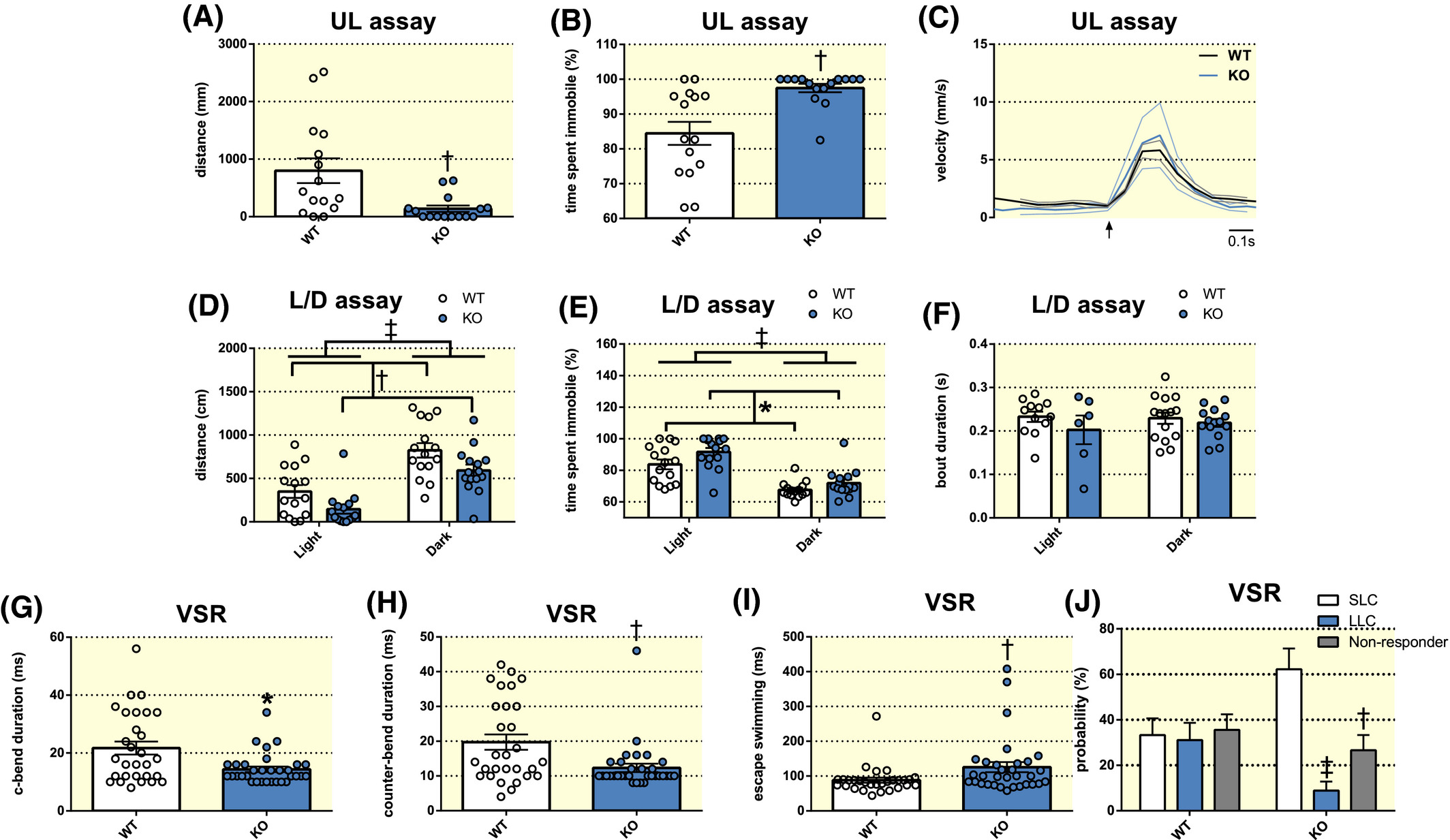Fig. 5 Effects of histamine receptor H3 (hrh3) deletion on larval behaviour. A, Total distance travelled, (B) time spent immobile and (C) average velocity during beat‐glide swimming of larval hrh3−/− (KO) and corresponding wild‐type (WT) fish in the larval unstimulated locomotion (UL) assay. The arrow in (C) indicates the onset of the swimming bout. n = 15/group. Mann‐Whitney U test. †P < .01 vs WT. D, Total distance travelled, (E) time spent immobile and (F) average swim bout duration in the larval light/dark transition (L/D) assay. n = 15/group. Two‐way ANOVA. Significant main effects are indicated in the graph. ‡P < .001, †P < .01, *P < .05. G‐I, Visual startle response (VSR) test. Larval KO fish displayed (G) shorter c‐bend durations, (H) shorter counter‐bend durations and (I) enhanced escape swimming compared to corresponding WT fish. n = 15/group. Mann‐Whitney U test. †P < .01, *P < .05 vs WT (J) In addition, KO fish were more likely to perform short latency c‐bends (SLC) compared to long latency c‐bends (LLC) and not responding at all. n = 15/group. Two‐way ANOVA followed by Tukey's post‐hoc test. ‡P < .001, †P < .01 vs SLC/KO. Data are presented as mean ± SEM
Image
Figure Caption
Figure Data
Acknowledgments
This image is the copyrighted work of the attributed author or publisher, and
ZFIN has permission only to display this image to its users.
Additional permissions should be obtained from the applicable author or publisher of the image.
Full text @ Acta Physiol. (Oxf).

